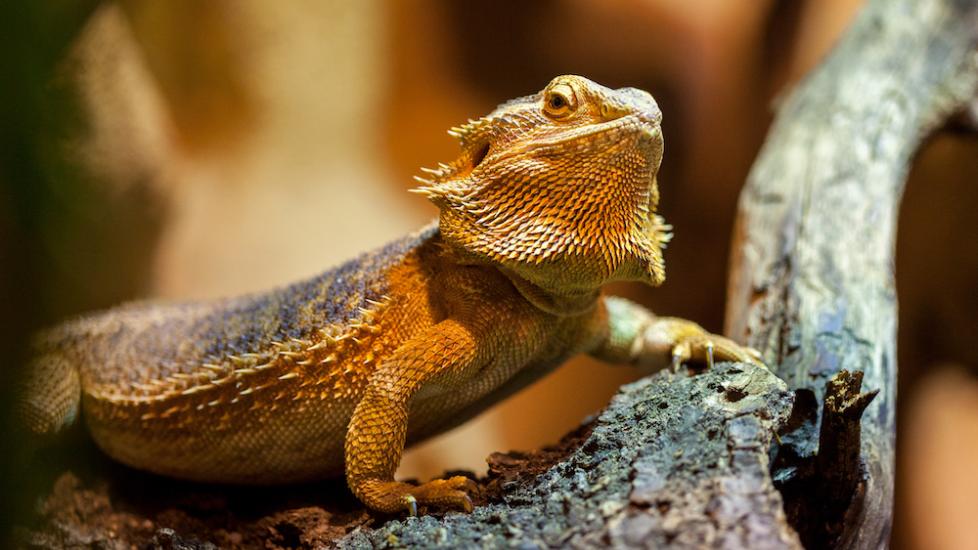Hypothermia in Reptiles
What Is Hypothermia in Reptiles?
The term hypothermia means having an abnormally low body temperature. Body temperatures can vary drastically in reptiles depending on the species. Therefore, one body temperature may not be suitable for another.
A more appropriate term for ectothermic (animals that obtain heat from the environment) species like reptiles is relative hypothermia, referring specifically to the individual species life history, biology, and thermal environment.
Relative hypothermia can occur in pet reptiles for multiple different reasons, but it is often associated with inadequate care practices. Insufficient care is the most common reason why reptiles develop different diseases which may develop slowly over time and can be life threatening.
Preferred Optimal Temperature Zone (POTZ) in Reptiles
Understanding your pet’s species-specific biology is vital to determining how to provide adequate husbandry (care). This will allow you to develop and provide an appropriate thermal gradient so your pet can determine their preferred optimal temperature zone (POTZ) and behaviorally control its body temperature.
Almost all reptiles are ectotherms which requires them to obtain heat from their environment to maintain an appropriate body temperature. Because most reptiles are not able to generate heat from their own body, they need to acquire heat from their environment.
There are several different ways that a reptile can maintain body temperature from the environment. These include:
-
Radiation
-
Conduction
-
Convection
-
Evaporation
Utilizing a combination of these allows any reptile to maintain their POTZ.
To properly allow your reptile to exhibit all these methods of heat acquisition and disposition, external heat sources are necessary to provide a thermal gradient within your pet’s habitat. Sources of heat can be provided through heat emitting light bulbs, ceramic heat emitters, under tank heaters, and radiant heat panels.
Reptile size can directly influence how much heat is needed to help a reptile achieve their POTZ.
Large animals such as monitor lizards often need higher temperatures to be provided because of their size, which takes a larger amount of energy to raise their body temperature. Larger animals often need longer to warm up compared to smaller animals. Conversely, smaller reptiles will lose heat faster than larger reptiles.
Relative hypothermia in reptiles can be a medical emergency depending on the severity of hypothermia and the affected species. The closer the reptile’s body temperature is to freezing (32 degrees F) the more of a medical emergency it will be.
Reptile bodies can freeze completely, leading to death. Chronic hypothermia negatively impacts the reptile’s immune system which can lead to secondary infections. These infections can be life threatening even if the hypothermia is corrected.
If you think your reptile is experiencing hypothermia, contact your veterinarian immediately to determine next steps.
Symptoms of Hypothermia in Reptiles
-
Lethargy
-
Decreased activity
-
Decreased appetite
-
Increased amount of sleeping
-
Poor growth rate
-
Decreased amount and frequency of defecation or urination
-
Secondary infections
-
Death
Causes of Hypothermia in Reptiles
Make sure your habitat is not near a drafty area and rather in a place that can allow for better environmental control. Enclosures placed near a window or drafty area can make it more difficult to control temperatures for reptiles.
Power outages or heat source failure can lead to temporary hypothermia for a reptile. This can easily be corrected with resumption of power or replacement of the heating element.
How Veterinarians Diagnose Hypothermia in Reptiles
A reptile veterinarian will first inquire about the care of your pet and sometimes this will help determine if your pet is experiencing hypothermia. Often, they will ask for specific temperatures within the habitat. As a pet parent, you should maintain a log of habitat temperatures you are providing for your reptile. Temperature guns are reliable to obtain both environmental and body surface temperatures.
Treatment of Hypothermia in Reptiles
Reptiles that are experiencing life threatening hypothermia will be warmed up by a veterinarian slowly; if a reptile is warmed up too fast, they can sustain life threatening complications that can lead to death. Reptiles are often warmed up in temperature-controlled incubators in the veterinarian’s office. Sometimes heat lamps can be used however it is harder to control temperature.
Recovery and Management of Hypothermia in Reptiles
Corrections in care are the best way to prevent hypothermia from occurring in the future. Different reptiles may need various treatments following a hypothermia event due to secondary conditions. It’s important to listen to your veterinarian’s recommendations to determine the best temperature needs based on your reptile.
Hypothermia in Reptiles FAQs
Can reptiles get hypothermia?
Reptiles can become hypothermic, and it can be life threatening. Knowing the thermal biology and life history of your pet is important to understand when a reptile becomes hypothermic.
What do reptiles do if their body temperature gets too low?
Reptiles will try and seek out warmer temperatures if they become hypothermic or the environment changes become too cold for them. Some species can also generate heat through small muscle contractions.
Can reptiles survive extreme cold?
Reptiles can survive extreme cold conditions and often do, but they behaviorally adjust their thermal environments. For example, some tortoise species will burrow during winter months when outdoor temperatures are not encouraging for survival.
How long can reptiles go without heat?
Reptiles should always be kept in an environment that is similar to their natural thermal biology. This may not always require them to have supplemental heat.
What is the most cold hardy reptile?
Very few reptiles are considered cold hardy, but a few thrive in cold environments. One of the most famous reptiles that is cold hardy or tolerant is the tuatara. These reptiles are unique in their life history and require cold temperatures in order to survive. Zoological facilities that display them often keep them in specially built cold rooms to provide them adequate temperatures.
Featured Image: Getty/huettenhoelscher
